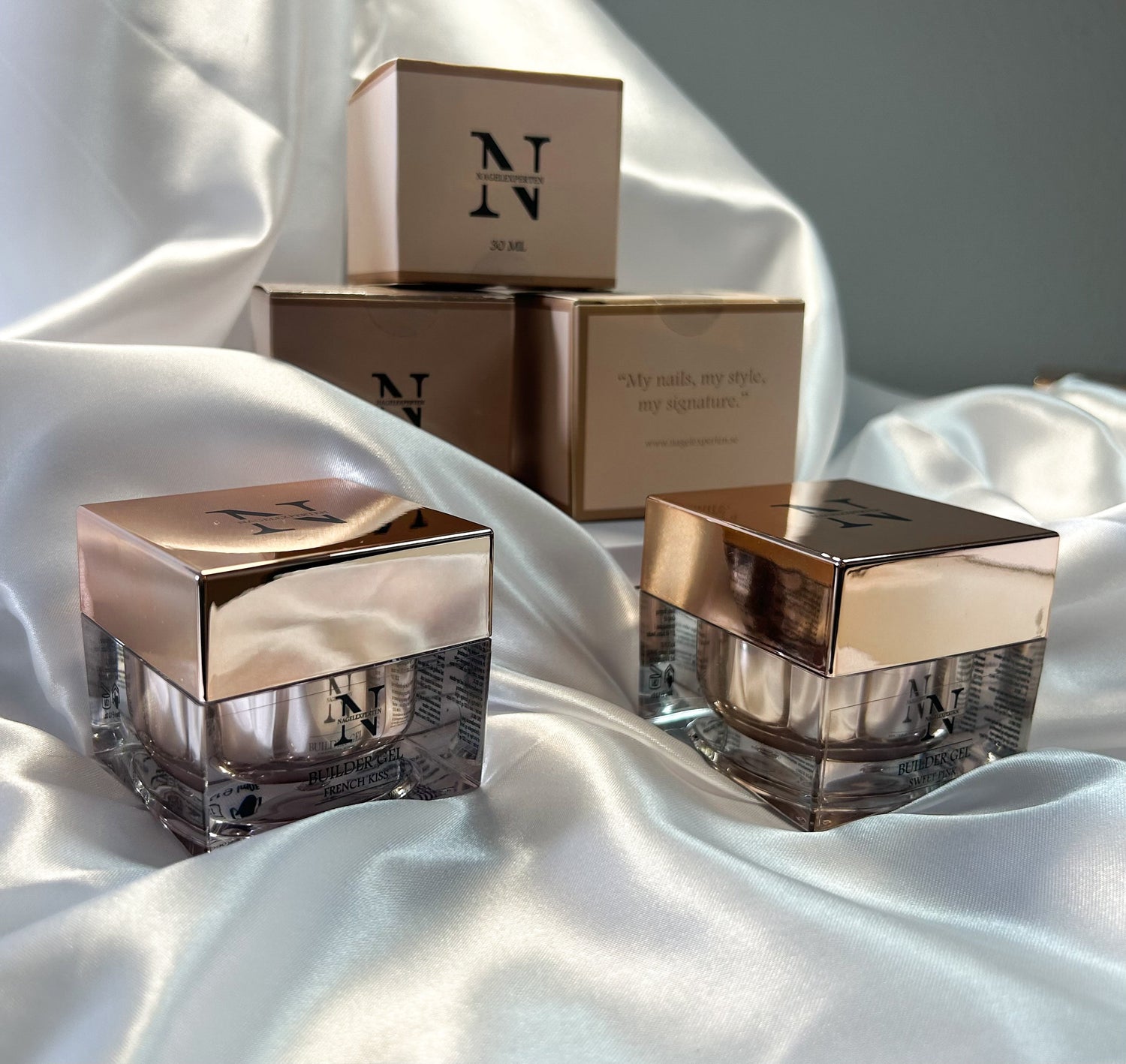Why has my UV top coat become discolored?
UV top coat is an essential product for finishing off a perfect gel manicure, but sometimes you may find that your top coat develops unwanted discoloration. This can be frustrating, but there are several possible reasons why this happens. Here we go over the most common reasons why UV top coat becomes discolored, as well as tips on how you can prevent this and keep your manicure fresh for longer.
1. Smoking - Discolors nails and top coat
One of the main causes of top coat discoloration is the chemicals found in cigarette smoke, primarily nicotine and tar. When you smoke, your nails and top coat are exposed to these substances, which tend to stick to the surface of your top coat. Nicotine, which is a yellowish substance, can quickly create a discolored surface on the top coat, giving your nails an undesirable yellow or brown hue.
2. Chemical reaction with other products
Many times, what causes discoloration can be a reaction between your UV top coat and other nail products, especially if the products are not compatible.
When using a matte top coat, always make sure you have wiped the sticky surface off the nail before applying the matte top coat. Failure to do so will cause the sticky surface to mix with the matte finish, which can result in: Discoloration, loss of the matte effect, or peeling or cracking of the top coat.
Tip: Make sure to use products from the same brand or check if they are compatible with each other.
3. Hair dye is a big culprit in nail discoloration
Hair coloring products contain dyes that can stain surfaces they come into contact with. If the dye runs onto your hands or you are not careful to wipe it off quickly, these dyes can penetrate your nail extensions and cause discoloration.
This doesn't just apply if you dye your hair yourself. When you shampoo your hair, a tiny amount of dye often comes off your dyed hair, which tends to stick to the top coat. This can happen even long after you dye your hair.
Ammonia and hydrogen peroxide are the most harmful chemicals. These substances can react with certain materials used in nail extensions (such as acrylic, gel or UV polish) and cause the color to change. The extensions can take on a yellowish, dark, flamboyant or uneven tone that cannot be easily removed. The chemicals can also cause your top coat to break down prematurely and become less resistant to wear.
4. Sunless tanning products
The active ingredient in sunless tanning products, DHA, reacts with the dead skin cells on the surface of the skin, producing a brownish color. This chemical reaction occurs through a process called the Maillard reaction, where DHA binds to amino acids in the skin. Unfortunately, this reaction can also affect other surfaces that come into contact with the product, including nail extensions.
Because DHA is a coloring substance, it can stick to the surface of nail extensions, especially if they are light or transparent. Nail materials such as acrylic, gel or UV polish can absorb this color, causing the extensions to take on a discolored tone. It is especially common for the nails to take on a yellowish or brownish tint that cannot be removed easily.
5. Storage in Improper Conditions
UV varnish and top coat need to be stored properly to avoid discoloration. If the product is exposed to direct sunlight, high heat or humidity, it can begin to break down and change color. This is especially true if the product has been unused for a long time.
Tip: Store your UV polishes in a dark, cool and dry place to prevent them from being exposed to bad conditions. Avoid storing them in direct sunlight or in a hot car, for example, as this can affect their quality.
6. Exposure to chemicals and cleaning products
UV top coat can also become discolored if your nails are exposed to various chemicals. For example, if you use harsh cleaning agents without protecting your hands, the nail polish may start to take on a yellowish tone, become patchy, or peel off.
Tip: Wear gloves when cleaning or handling chemicals and avoid bathing or washing dishes in hot water for long periods of time. The less your top coat is exposed to harsh environments, the longer it will maintain its fresh appearance.
7. Food, drinks and spices
Many foods, especially those colored with natural or artificial dyes, can transfer their pigments to nail extensions. Colorful foods such as berries (such as blueberries, raspberries, or blackcurrants), spices (such as curry and saffron), coffee, tea, and red wine are all examples of foods that can discolor nails.
Some foods, such as citrus fruits (such as oranges, lemons, and limes), tomatoes, and other acidic foods, contain acids that can affect nail extensions. Acids can break down the surface layer of nail extensions, making them more susceptible to discoloration or losing their shine. If you frequently handle acidic foods without protecting your nails, this can cause the color of your nail extensions to fade or become mottled.
8. Matte top coat - More susceptible to dirt and discoloration
Matte top coats have a different chemical composition than glossy top coats. To achieve the matte finish, these top coats often contain particles or ingredients that create a slightly textured surface. This porous surface allows dirt, makeup, and oil to adhere more easily, which can cause nails to look dirty and discolored.
Another important aspect of why matte top coat gets dirtier and discolored is that glossy nails often have the ability to "hide" certain types of dirt, while the matte finish does not offer the same protection. Glossy nails reflect the environment, making dirt and grease less visible, while matte finishes absorb more light and make stains more visible.
9. Discoloration of jeans and colored clothing
Jeans and colored clothing can discolor nail extensions, especially if the nails are light or translucent, due to dyes in the fabric. Jeans and dark clothing often contain strong color pigments (such as indigo) that can bleed on contact, especially if the garment is new or damp. When the nails are rubbed against the fabric, such as when putting your hand in your pocket, the color can be mechanically transferred. If the nail extension has a slightly porous surface (e.g. matte or unsealed surface), the color can be absorbed more easily.
10. Lighters and soot
When you light a candle or use a lighter, soot can form, especially if the wick is too long or the candle has impurities in the wax. The soot can stick to the surface of the nail and cause discoloration, especially on light or dull nails. If your nails get too close to the flame, the heat can affect the material of the nail extension (acrylic, gel or polygel). This can result in yellowing or a brownish discoloration, especially on light nails.
Heat can affect topcoats and some nail materials by changing their chemical structure, which can lead to a yellowish or smoky tone.
11. Discoloration from sunlight & UV radiation
UV rays found in sunlight can break down certain chemical bonds in nail material, which can lead to yellowing or discoloration. Light-colored nails, especially white and transparent ones, are extra sensitive and can turn yellow or take on a slight brownish tone.
Matte topcoats and porous surfaces can absorb more radiation and change more quickly than shiny surfaces. If you are going to be in bright sunlight for a long time, try to protect your nails by keeping them in the shade.
12. Wear and tear and physical impact
Over time, UV polish and top coat can wear down, especially if you frequently use your hands for heavy-duty tasks. This can lead to discolorations taking hold, surface damage, or nail polish peeling off the nail.
Tip: To avoid wear, use a base coat before applying UV top coat to create a better bond between the nail and the polish. Also, avoid using your nails as tools, as this can lead to mechanical damage.
13. Acetone and solvents
Acetone or solvents found in some nail products and cleaning products can affect the chemical structure of the top coat. This can cause the surface of your nail polish to deteriorate and the color to become discolored. This is common for nail therapists who handle acetone products and similar products in their work.
Even some strong hand sanitizers can have an impact on the nail surface.
Tip: Try to avoid handling strong products without gloves after applying UV top coat. If you need to disinfect your hands, choose a product that is gentle on your nails.
14. Silver shampoo can cause stains
Silver shampoo contains purple and blue color pigments that neutralize yellow tones in the hair. These pigments can stick to the surface of the nail extension, especially if it is light or porous, resulting in purple, blue or gray stains.
Dull nails or nails without a protective top coat more easily absorb color from products like silver shampoo.
Unsealed acrylic or polygel can soak up paint and become discolored.
The longer the silver shampoo is in contact with the nails, the greater the risk of the pigments sticking. If you massage the shampoo in with your hands without gloves, the nails can absorb the color, especially at the cuticles and edges.
15. Foundation and makeup products
Foundation and other makeup products can discolor nail extensions, especially if your nails are light or matte. Foundation, bronzer, and powder contain color pigments that can stick to your nails.
When you apply foundation with your fingers, your nails can come into contact with the product and gradually discolor. Oil-based makeup products can leave a yellowish or beige coating that is difficult to wash off.
If the nail extension has a matte finish , lacks top coat, or has a slightly porous surface (especially acrylic or polygel), makeup can easily stick and create stains.
Summary
Discoloration of UV top coat can occur for many different reasons, from food & drink to chemical reactions with other products or exposure to smoking and beauty products. By following proper application techniques, choosing high-quality products, storing your nail polish properly, and protecting it from chemicals and wear, you can prevent discoloration and extend the life of your manicure.

